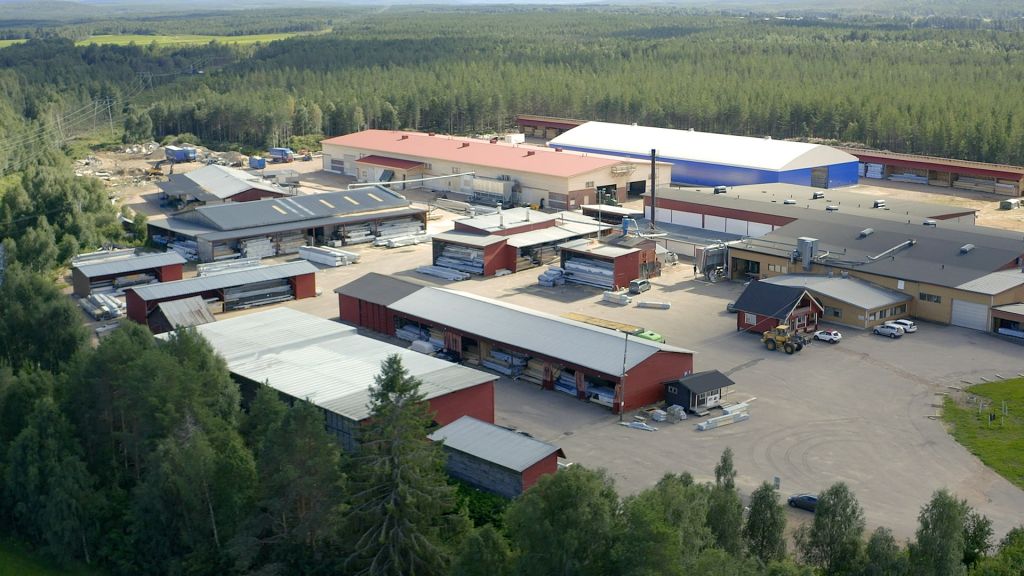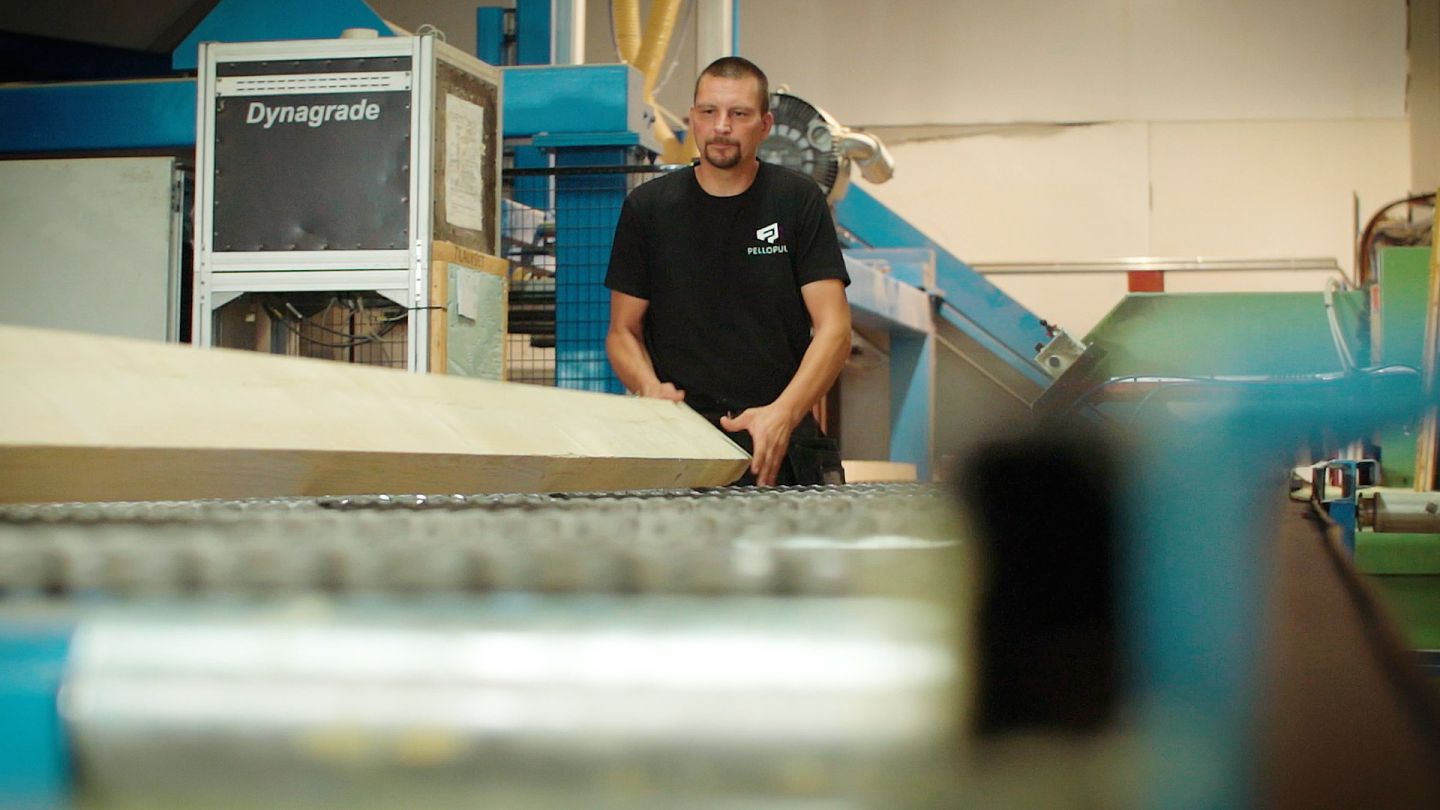Increased interest in wood construction is supported by the megatrends of environmental sustainability and health. Lapland’s Pellopuu meets the growing demand through bold development and investment projects.
Log structure manufacturer Pellopuu Oy has achieved a lot in the last few years through large and bold investments and launching a new innovative product, while seeking new forms to expand the export company’s sales.
Pellopuu has a long history in accumulating excellence in the processing of Nordic wood and the construction of log cabins. Pellopuu was founded in 1952 in Pello, Western Lapland. The company specialises in the manufacture of glue-laminated timber, log blanks, lamella logs, solid logs, log structures and planed products, using northern hardwood, such as pine and spruce as building material. Pellopuu delivers products to Norway, Russia, Estonia and Germany, among others.
Managing Director Mikko Mannila says that although last spring the company had to halt construction momentarily due to the Covid-19 pandemic, the rest of the year has been busy again. The company’s turnover in 2020 was 7.2 million euros, approximately 15 per cent higher than the previous year. Pellopuu employs 35 workers.
Growth through bold investments and innovation
One of the company’s innovative products is the GIANTLOG, which minimises the use of joints in construction and offers a novel smooth and linear, modern log surface. Giant logs enable a faster, more economical and environmentally friendly way to build log structures, including larger buildings such as terraced houses and schools.
Giant logs may be up to 1,080 millimetres thick; the thickest on the market. They speed up construction considerably, as a single-storey building can be made with only three logs, when traditionally twelve layers of logs have been needed.
The giant log was introduced on the market about a year ago and it has been a success, being sold both domestically and abroad. Salvos Finland Oy, producer of wooden structures, is responsible for their sales.
– The model was launched in 2020 and it has been a success. We want to keep it that way, says Managing Director Mannila.
This year, Pellopuu will invest in the sale and production of giant logs. For example, the aim is to start running the production line in three shifts, meaning that more employees will be needed.
– We seek growth through developing our sales channels. We are also considering some additional investments for the future, but they are still in the planning phase, Mannila says when asked about the company’s future plans.
The Pello-based export company has made bold investments in recent years totalling more than five million euros. As part of the manufacturing of its new innovation product, Pellopuu has acquired a log production line of unprecedented magnitude. A new 3,300-square-meter hall has been built for the production line.
In addition to the new product, Pellopuu invests heavily in sustainable operations and environmentally friendly solutions in production. For example, the company built a 1,151-panel PV solar system that was commissioned in the summer of 2020. With an annual output of about 251,000 kilowatt hours, it is one of the largest in Northern Finland. The solar panels have been installed in the factory area on the wall surfaces of the company’s large industrial buildings instead of the roofs so that they do not get covered in snow.

High-quality raw materials at close range
Pellopuu’s location in Lapland has provided the company with many advantages. For example, employment relationships tend to be long and exporting is easy as the company is located near the Swedish-Norwegian border. Route E8 runs along the western border of Finland all the way to the Norwegian border in the north.
– Exporting products from our location is easy. Norway is an important importer of log products. Pellopuu is located conveniently a truck drive away from Norway, explains Mannila.
It is also important that the raw materials used by the company grow nearby and at a short distance from the company’s production plant. Nordic wood is a strong and resilient building material.
– Our raw materials grow at close range. There are considerable differences between wood from northern and southern, for example, Central European areas, says Mannila.
– Trees in the north grow densely. They are therefore of higher quality, confirms Production Director Reijo Ojaniemi.
High-quality log structures can be reused later and therefore bring savings both in relation to construction and the product’s life cycle. The use of sustainably produced wood as a building material saves natural resources and slows down climate change.
Pellopuu’s products are environmentally and socially sustainable and meet the requirements of the PEFC 2002: 2013 certificate regarding the chain of forest-based products.
Megatrends support wood construction
Logs are mostly used in the construction of detached houses, but they can also be used to build hotels, apartment buildings and public buildings such as schools and kindergartens. Experts believe that wood construction will increase at an accelerating pace in the coming years. There is also a desire to incorporate more wooden buildings in growth centres.
– Wood construction is becoming increasingly popular, and for a good reason. This is because it incorporates two megatrends; environmental sustainability and health, tells the Pellopuu Managing Director.
Wood construction is encouraged in Finland and the Finnish government supports wood construction projects, as it believes it is a good way to reduce our carbon footprint related to housing and construction. Log construction is particularly good for the environment, as the trees sequester carbon as they grow, and after construction, act as carbon pools.
– Young trees sequester considerable amounts of carbon, and when they get to a certain age, they stop growing. What could be more sensible than felling an old tree and planting a young one in its place? asks Mannila.
Log construction is a sustainable option also in terms of health. According to a study by the National Institute for Health and Welfare, residents of log homes are more satisfied with their indoor air quality than those living in other types of wooden or stone houses.
With log construction, not only both the interior and exterior surfaces of a building are created at the same time, but log structures also have inherent insulating and breathable features, preventing indoor air problems.



